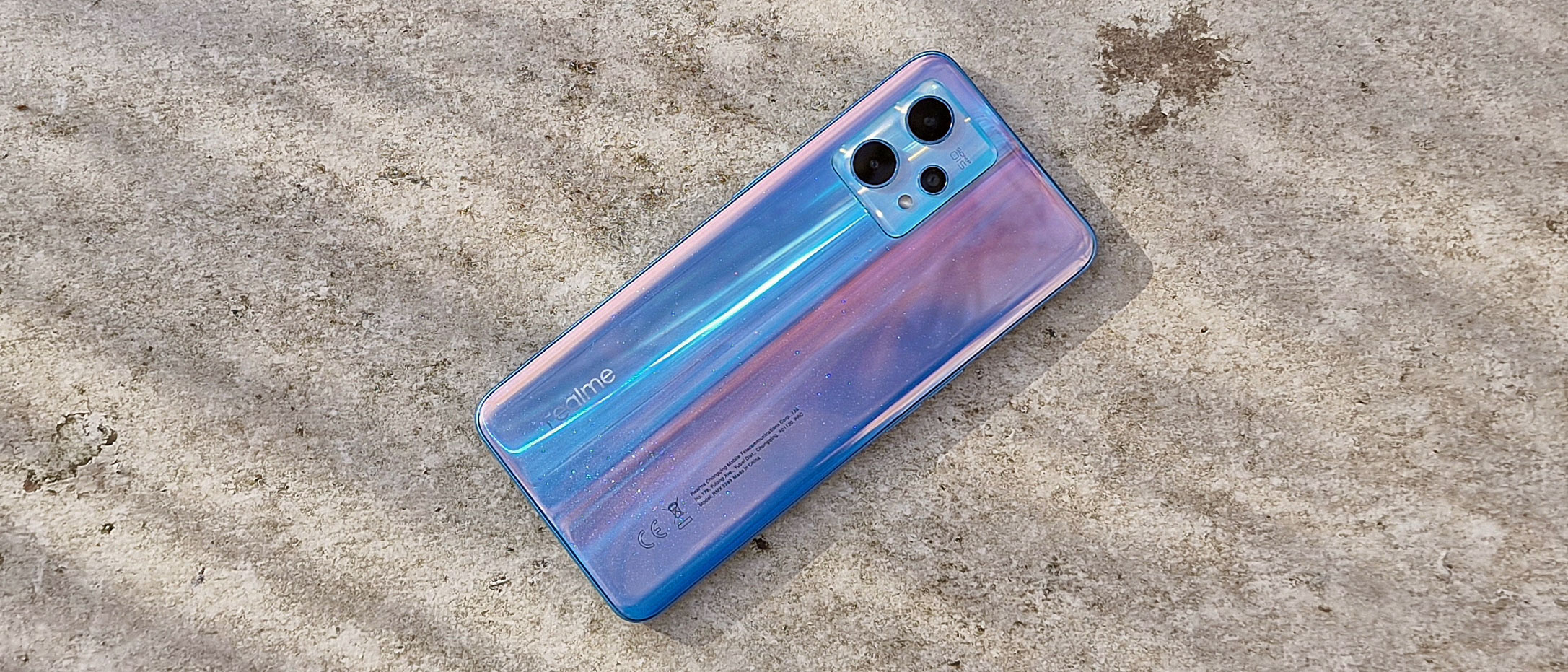TechRadar Verdict
Realme proves it’s a mid-range champion with its first Pro Plus phone. The camera, processing power and charging speed all trump same-price rivals, and it also stands out with a novel color-changing rear and built-in heart rate monitor. We’ve really had to nit-pick to find any problems - if you’re on a budget, you absolutely must check out this phone.
Pros
- +
Novel color-changing design
- +
Great for low-light photography
- +
Fantastic value for money
Cons
- -
Heart monitor is hidden in menus
- -
Display is only 90Hz
- -
More bloatware than we’d like
Why you can trust TechRadar
Two-minute review
The Realme 9 Pro Plus represents a new chapter for the company’s budget line of Android phones. This is the first ‘Pro Plus’ handset in the range, and it boasts a few features that we don’t see in the average smartphone.
Launched alongside the Realme 9 Pro (a non-Pro version hasn’t been unveiled at the time of writing), this is a seriously impressive device that shows us that ‘Pro Plus’ isn’t just an oxymoron, it’s a promise.
If you know Realme phones, you’ll know that the brand excels in the budget to mid-range market. The Realme 9 Pro Plus is just more evidence of that. As with the Realme GT from 2021, we’ve found ourselves very hard-pressed to find genuine criticisms about this phone, leaving us cursing that TechRadar’s review format requires three ‘cons’.
There are two unique features that, it seems, are meant to be the Realme 9 Pro Plus’ selling points. The first is a heart rate monitor built into the fingerprint scanner. This is a nice extra, but if we weren't testing the mobile to review it, we probably wouldn’t have noticed this existed.
The second selling point truly is something bold and bizarre: the rear of the phone changes color in sunlight, going from a sparkly blue to bright red. We love how weird this is - even if it brings no tangible benefits.
But while you might check out the phone for this eye-catching novelty, you’ll stay for its solid range of features and specs.
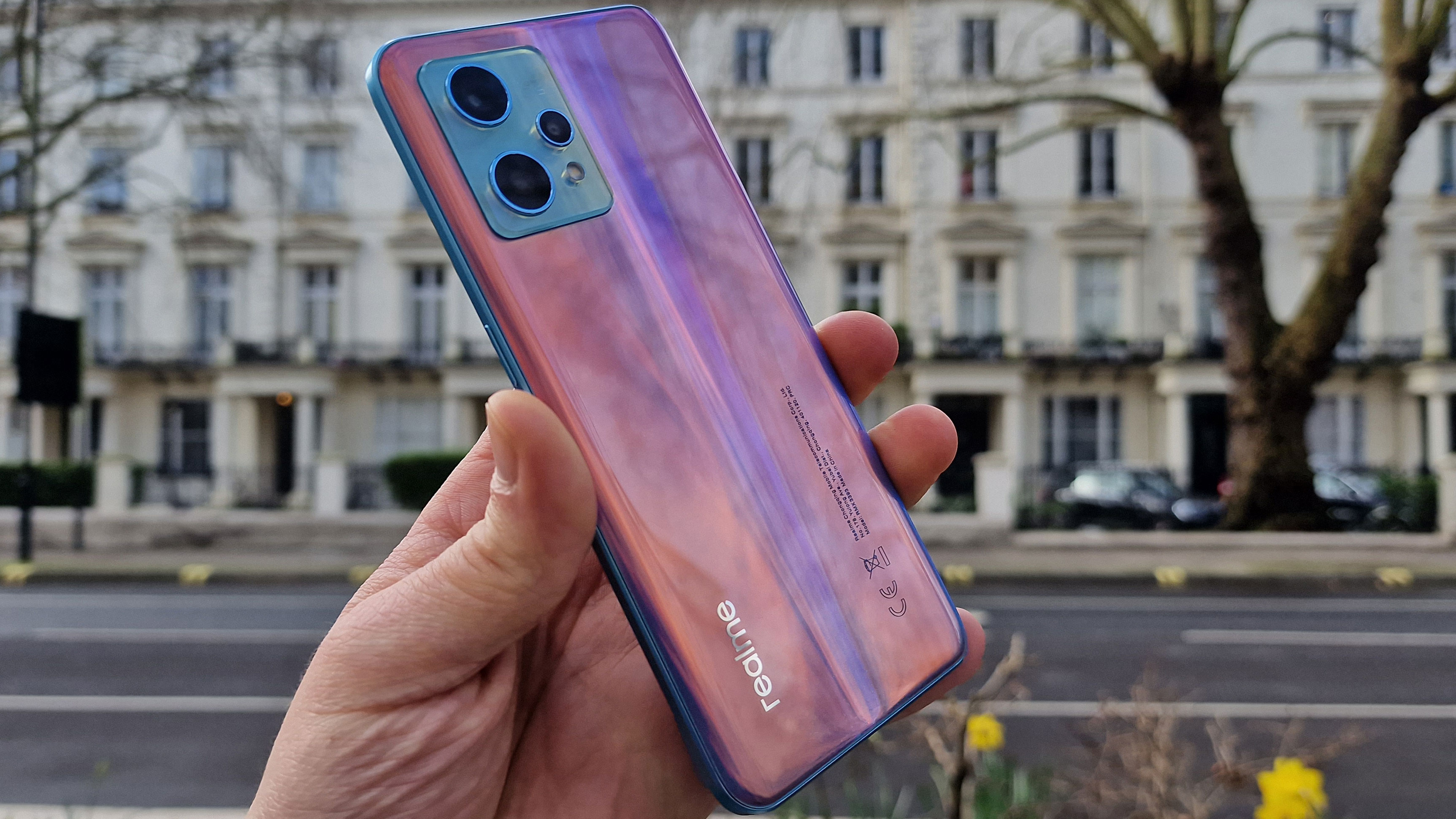
The phone’s cameras, charging speed and processing power are all above-average for a phone in this price range. Even the weaker elements, like the display or battery, are still on par with rival phones at this price. As we said, it’s hard to critique this phone.
Particularly impressive is the camera’s capabilities in low-light conditions, which is a type of photography we’ve previously only seen premium phones perform well at. With its 50MP Sony sensor, the Realme captures night shots you’d think were taken on an iPhone.
The Realme 9 Pro Plus does all this without betraying its roots as a low-cost device. Its price is enough to make it a seriously impressive phone for nearly all buyers. In fact, it’s a good enough phone to tempt people who’d otherwise want a much more expensive Samsung Galaxy or Apple iPhone
As you can tell from this breathless two-minute review, the Realme 9 Pro Plus really impressed us. It’s a great start to 2022 from the brand and a benchmark we’ll be comparing all future similarly priced phones to.
Realme 9 Pro Plus price and availability
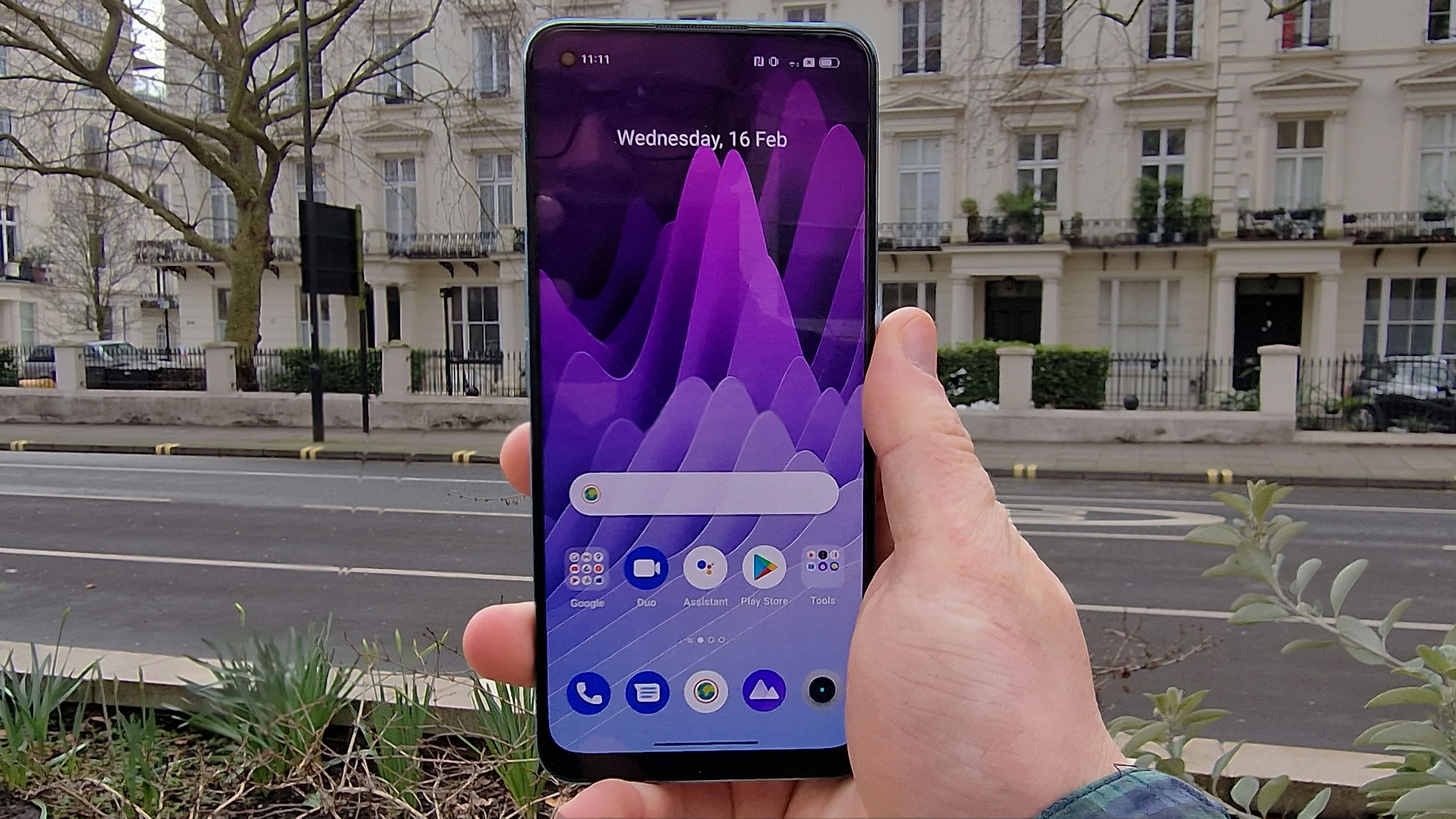
The Realme 9 Pro Plus costs £349 (roughly $470, AU$660), so it straddles the line between ‘budget’ and ‘mid-range’ phones.
The Realme’s release date is March 4 in the UK. We don’t have availability information for the US and Australia, but that’s not a total surprise. Realme doesn’t sell phones in the States and, while it does sell in Australia, the Realme 8 series didn’t launch there.
That price is, frankly, impressive for a smartphone that looks, feels and runs like this one. Contemporary competitors include the Moto G200 and the Xiaomi Redmi Note 11 Pro which are a tiny bit more expensive.
When we started testing the Realme, we weren’t told the price, and we came to the conclusion that it’d be quite a bit more expensive than it actually is. When we found out the real price, we were shocked - that is to say, this seems like a bargain.
Design
The Realme 9 Pro Plus uses a rear design pattern that’s as novel as it is bizarre. While it doesn’t look that way from the images accompanying this review, trust us, it’s odd.
That’s because of what Realme calls its ‘Light Shift Design’. This isn’t just one of those color-changing backs like quite a few phones have, which flicker between shades as you turn them - no, it’s more like the Vivo V23.
It’s best to compare it to one of those color-changing mugs - when you leave the phone in sunlight, it gradually turns from blue to bright red, something we discovered with shock the first time we brought the device into the sun. After a few minutes out of the sun, it goes back to blue.
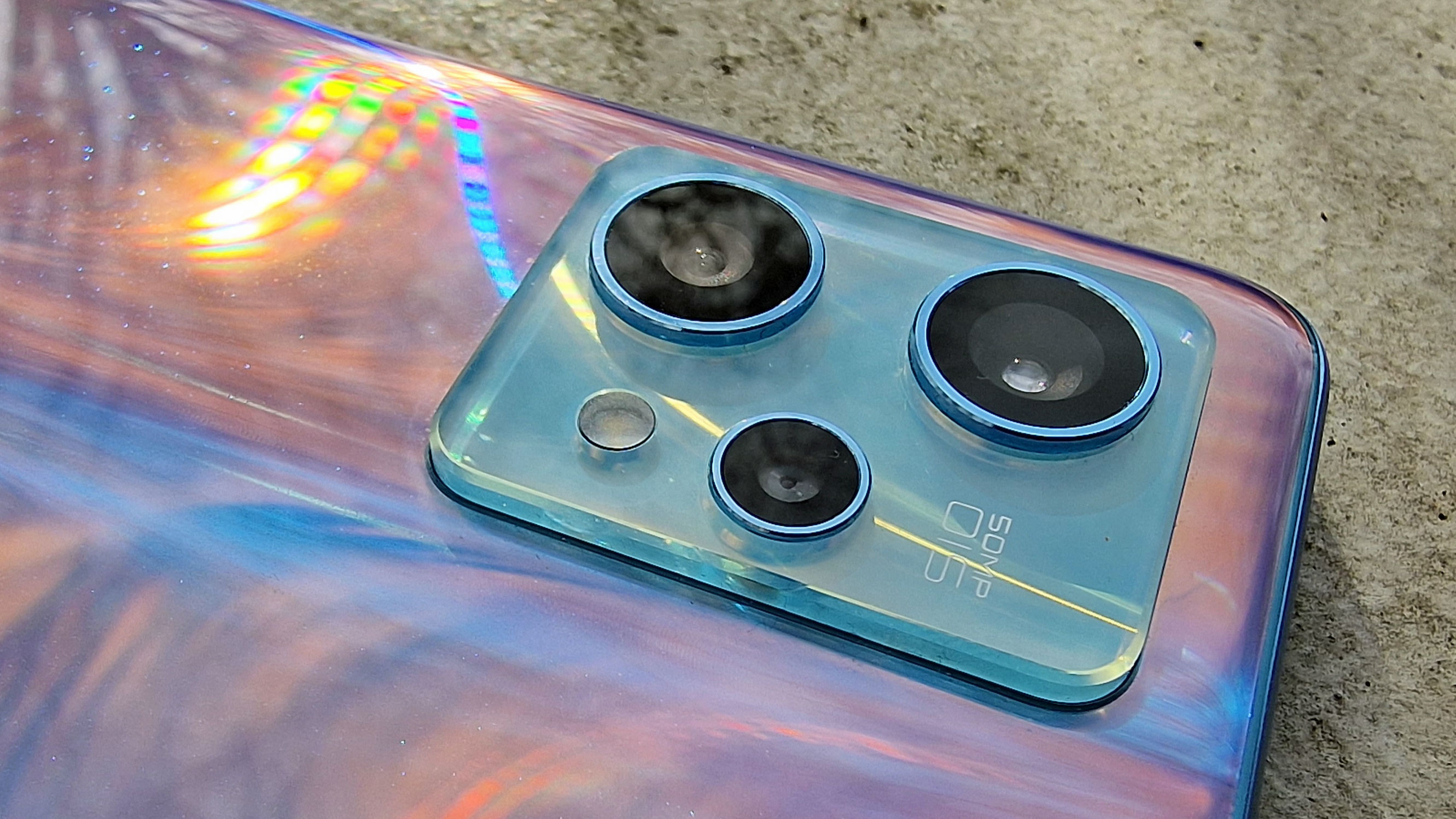
This is a cool trick and was great fun to watch the first few times we tried it. But we should point out that the color change requires direct sunlight, not indirect or artificial light, so it only works in particular circumstances. If, like us, you live in the UK, you’ll only get to use this feature about three times per year.
Beyond that eye-catching gimmick, this is your standard Android phone. There’s a USB-C port and 3.5mm headphone jack, with a power button on the right edge and a volume rocker on the left one.
As well as the Light Shift Design version of the phone we tested, there are also black and green versions available.
Display
With a 6.43-inch size, the Realme 9 Pro Plus is fairly medium-sized in the grand scheme of Androids, and its resolution of 1080 x 2400 and 90Hz refresh rate are also both par for the course for a phone of this price.
So it’s a perfectly serviceable screen, fine for playing games or streaming videos (most apps only offer at that resolution anyway). It’s fairly colorful too, though we did find the max brightness was a little lower than it could be.
Breaking up this display is a punch hole for the camera cut-out at the top left.
This phone uses an in-display fingerprint sensor, and one of the intriguing features of the phone is the fact that this doubles as a heart rate monitor. It’s a fun addition, which might be useful for people who don’t have a fitness tracker or bespoke tech for the function, though obviously, it’s not as accurate as either of those.
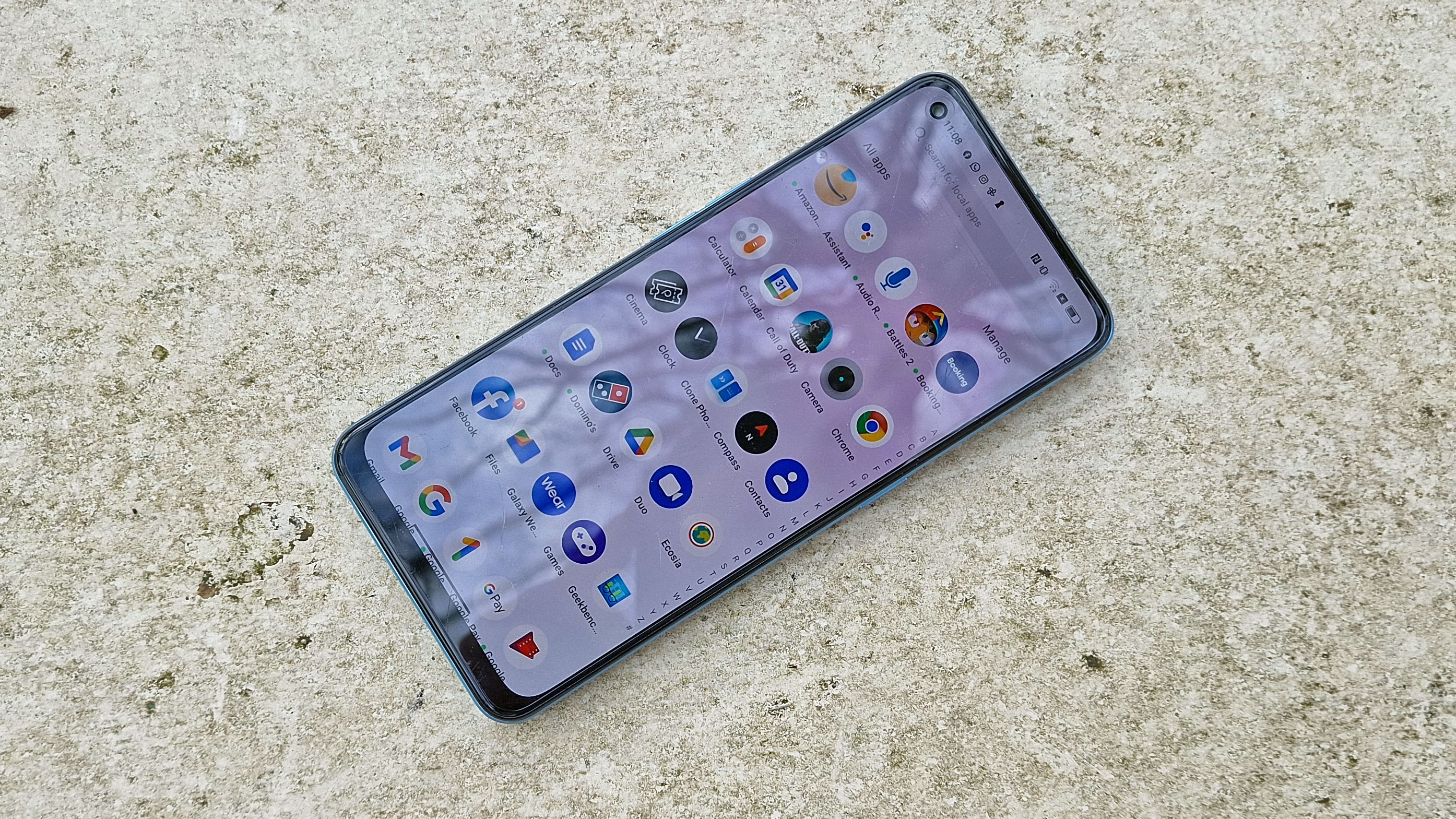
Unfortunately, the function is a little hidden in the phone - we had to search for it in the Settings app - so we’d like to see a home screen widget or better placement for it.
Cameras
There are three rear cameras on the Reamle 9 Pro Plus. Leading the charge is a 50MP main snapper, which is joined by an 8MP ultra-wide and 2MP macro cohort.
We were pleasantly surprised by the photo quality from the cameras Snaps looked bright and bold, with sharp detail and contrast was pronounced, especially on ultra-wide pictures.
The color profile was incredibly similar between standard and wide pictures, avoiding an issue that many multi-camera smartphones have. On the topic of ‘avoided problems’, ultra-wide pictures were barely distorted at all.
Likely thanks to the Sony IMX766 sensor in the main camera, which is fairly large and therefore takes in more light, low-light and night pictures looked great. Shots taken in Night photography mode were full of detail, sharp, and well exposed too, with sources of light in the shot not blowing out the rest of the image.
However, the standard Photo mode was no slouch for this kind of shot either, which meant that even when we didn’t have time to hold the camera still for several seconds (which Night mode requires), we could still capture an adequate shot.
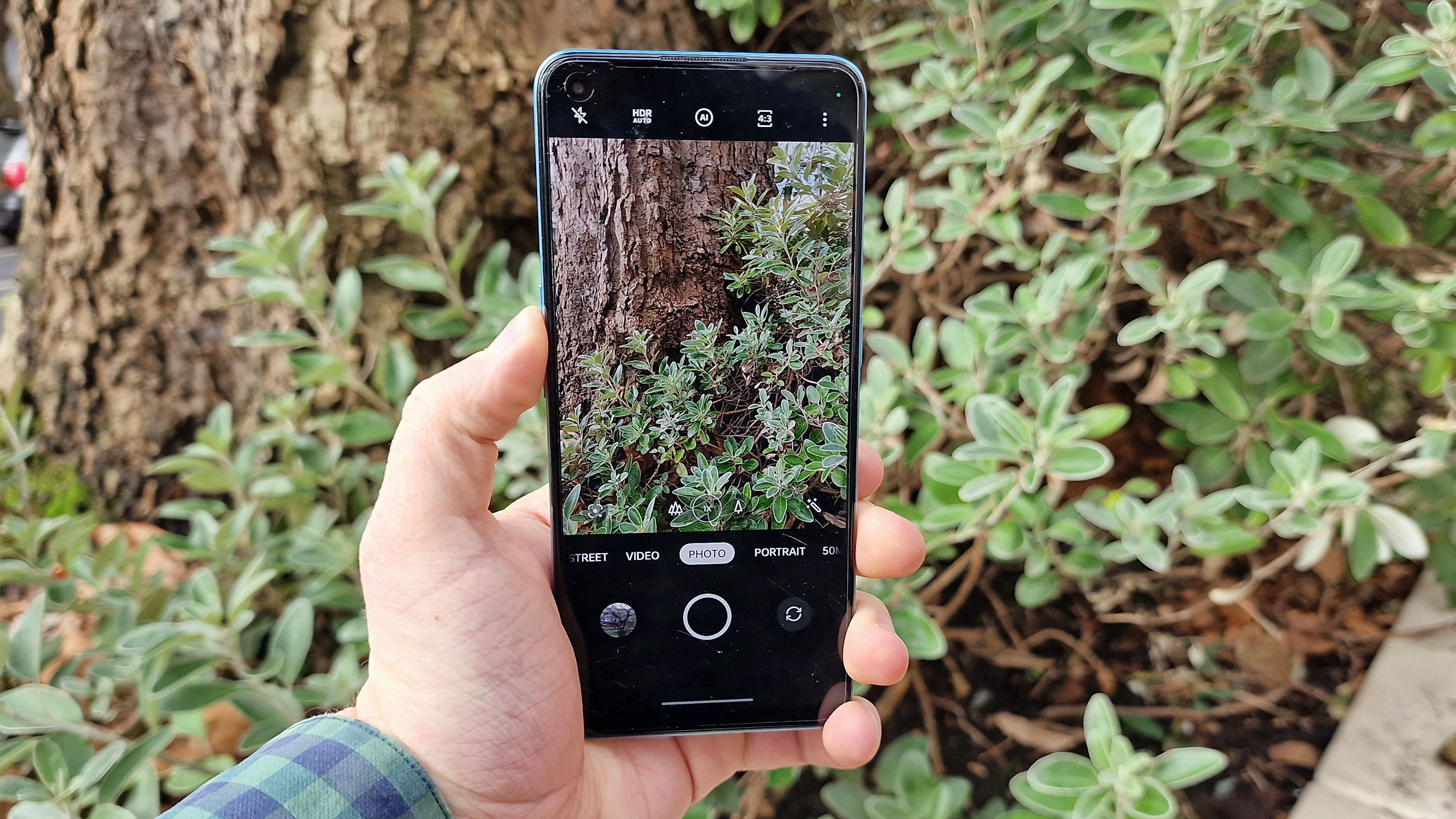
It’s rare for a budget phone to be any good for low-light photography, so we were very pleasantly surprised by the Realme 9 Pro Plus’ performance.
The front-facing camera hits 16MP, and while selfies looked okay, we found they were a little washed-out. Maybe the vibrant pictures taken on the main camera spoiled us, but we would like to have seen more colorful selfies.
Video recording goes up to 4K, which is pretty standard for any modern smartphone, though that’s at 30fps - you can only go up to 60fps if you drop the resolution down to 1080p. Video quality was as good as photography, but we did find that autofocus while recording could be jittery, jumping to re-focus on different objects instead of smoothly gliding between subjects.
A new camera mode we haven’t seen before is Street, which is apparently for Street Photography, with a few different filters available. In practice, it didn’t offer any extra benefits over the standard camera modes and filters. There’s also a tilt-shift mode, something we have seen a few smartphone cameras try before, but we’ve always found that AI software can’t convincingly recreate the complicated camera hardware trick and it was the same here.
The usual crowd of modes is also present including macro, panorama, pro, slo-mo video, document scanning, time-lapse and dual-view video tools.
Camera samples
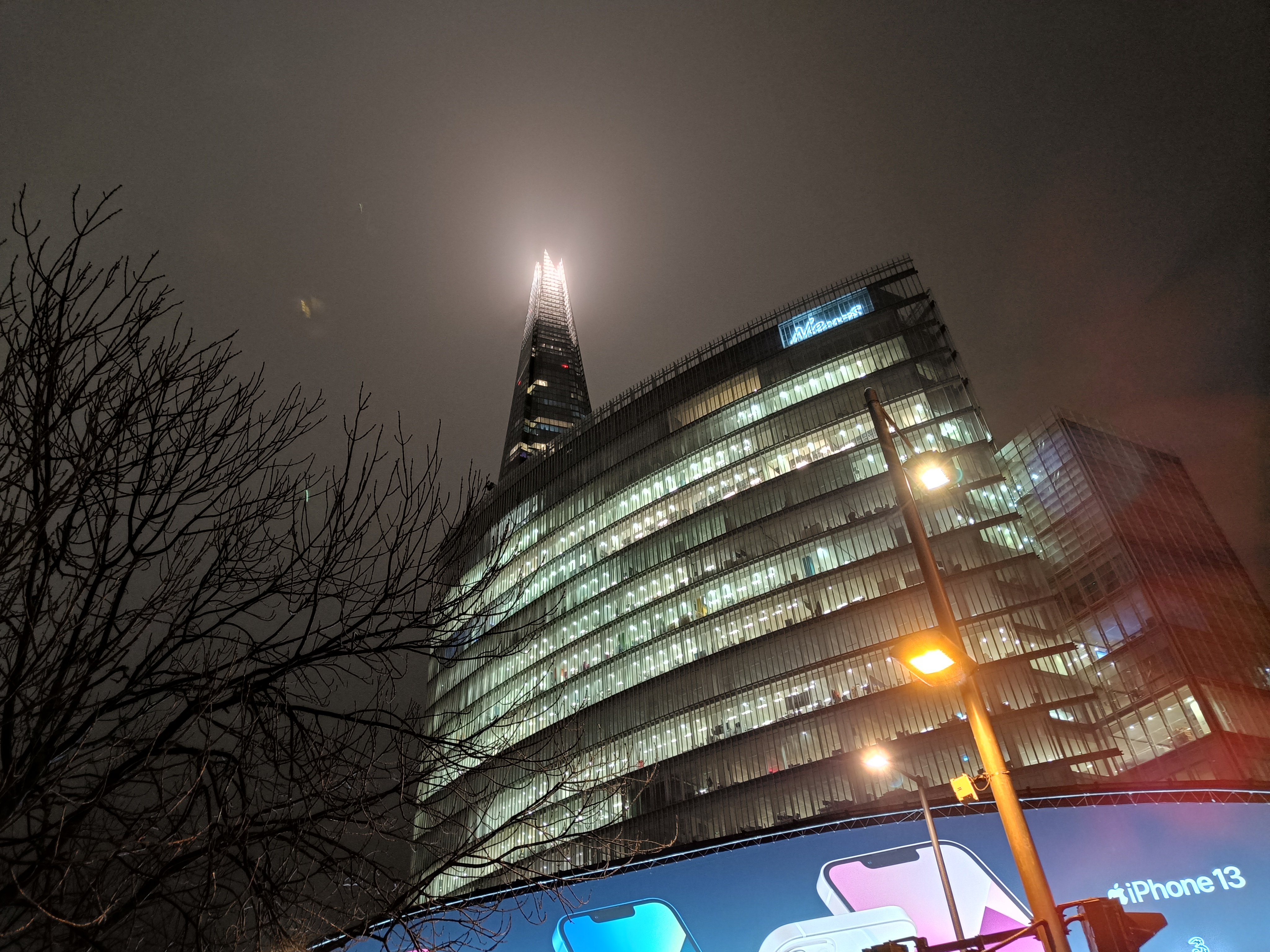
Taken with Night mode

Taken in the standard camera mode

Taken in Night Mode
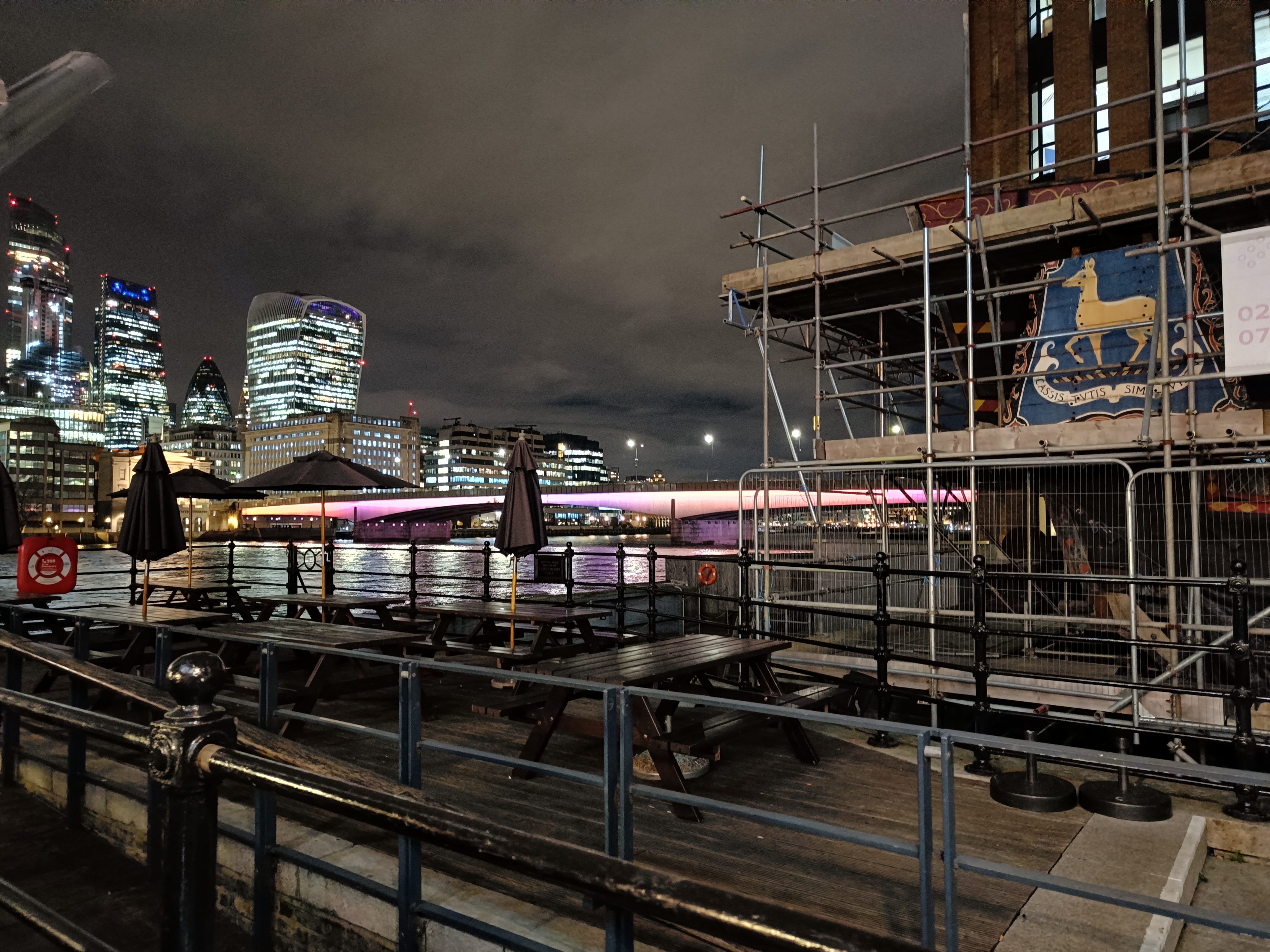
A night shot taken in standard mode

Taken in standard mode on an overcast day

Taken on the selfie camera

Performance and specs
The Realme 9 Pro Plus is the second phone we’ve seen with the MediaTek Dimensity 920 chipset - the other was the aforementioned color-changing Vivo V23. This is a mid-range chip that slightly beats Snapdragon alternatives.
When we put the phone through the Geekbench 5 benchmark test, it returned a multi-core score of 2258. That’s better than the Vivo V23, which hit 2079, and puts it on par with the Samsung Galaxy S10 5G, Nubia Z20 and iPhone XR, flagship phones from past years.
For some additional context, contemporary mid-range processors usually hit around 1800, while top-end ones hit the low 3000s or sometimes high 2900s, so the Realme 9 Pro Plus is pretty powerful for its price.
We tested the phone over long gaming bouts and found it performed admirably - titles loaded quickly and were generally able to comfortably run high graphics options. In addition, the phone took a long time to heat up while gaming, likely thanks to new cooling tech Realme has introduced here.
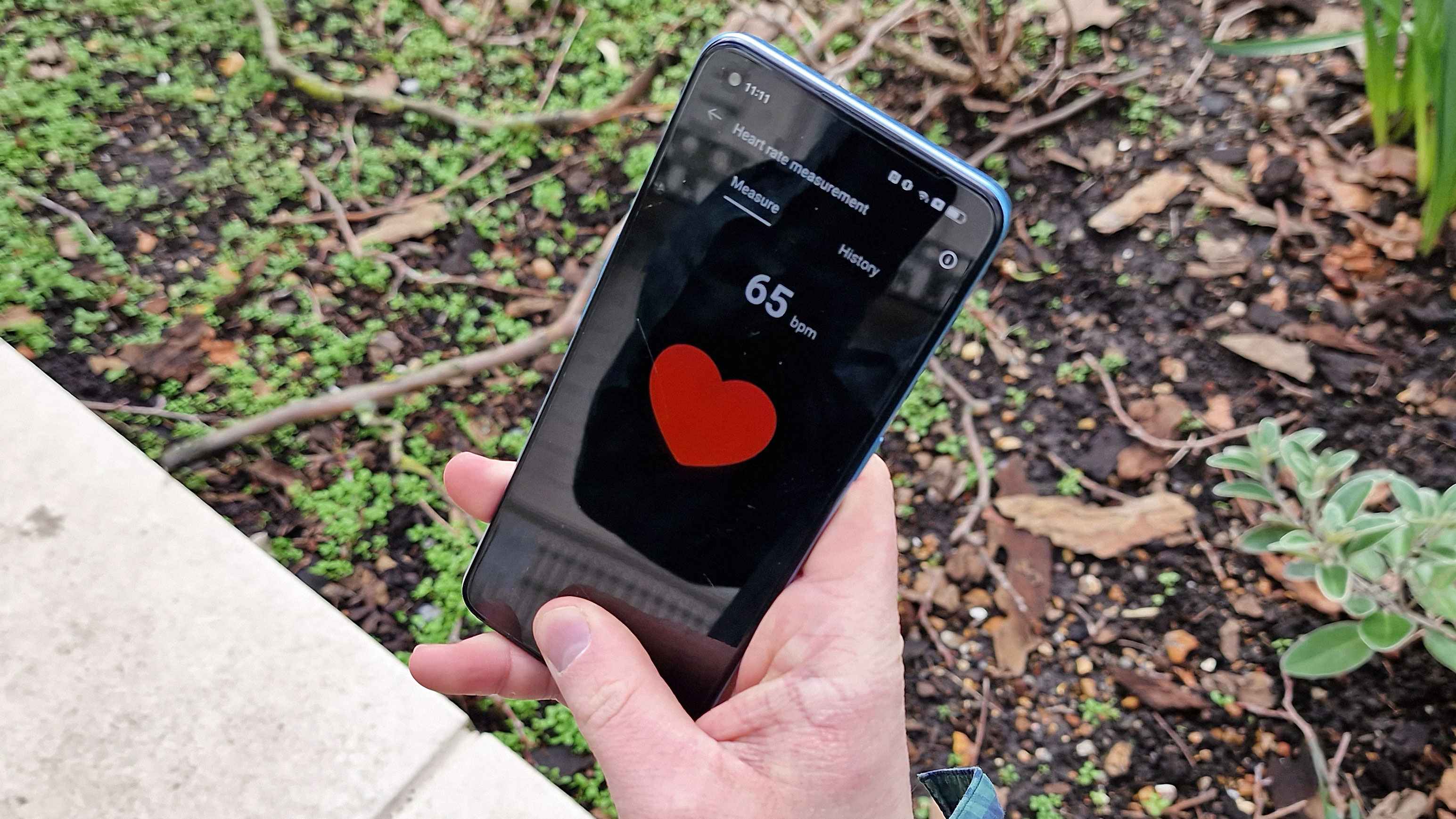
We tested a version of the phone with 8GB RAM, but RAM expansion is on by default - this lets you use storage space to bump up the RAM a little bit and the Realme lets you get up to 5GB extra this way. There was 128GB storage in our review unit.
Since the Dimensity 920 has a 5G modem, you can connect this phone to the top-tier connectivity networks, if you live in an area that offers it.
There are dual stereo speakers on the Realme 9 Pro Plus, which is good for gaming or streaming media as it means it’s harder to accidentally cover the speaker grilles with your hands.
Software
The Realme 9 Pro Plus runs Android 12 with the company’s own Realme UI laid over the top. This is largely a design and theme change, but Realme does bring a fair amount of bloatware with its user interface.
The key selling point of Android 12 is its Material You feature, which lets you change app icons to match your home screen wallpaper, but like most Android 12 forks, this wasn’t available on Realme UI at the time of the 9 Pro Plus’ launch. (However, if you’re reading this review months after it was first published, it’s possible Material You has been brought to the phone.)
As mentioned, bloatware is a bit of a problem here. The Realme 9 Pro Plus comes with Amazon Shopping, Booking.com and LinkedIn already installed. We’ve seen other phone UIs with much more bloatware, so Realme isn’t the worst for this by any means, but it’s still rather irritating.
We found that navigating the phone’s user interface was pretty snappy: there was rarely lagging when we swiped between menus or opened and closed apps.
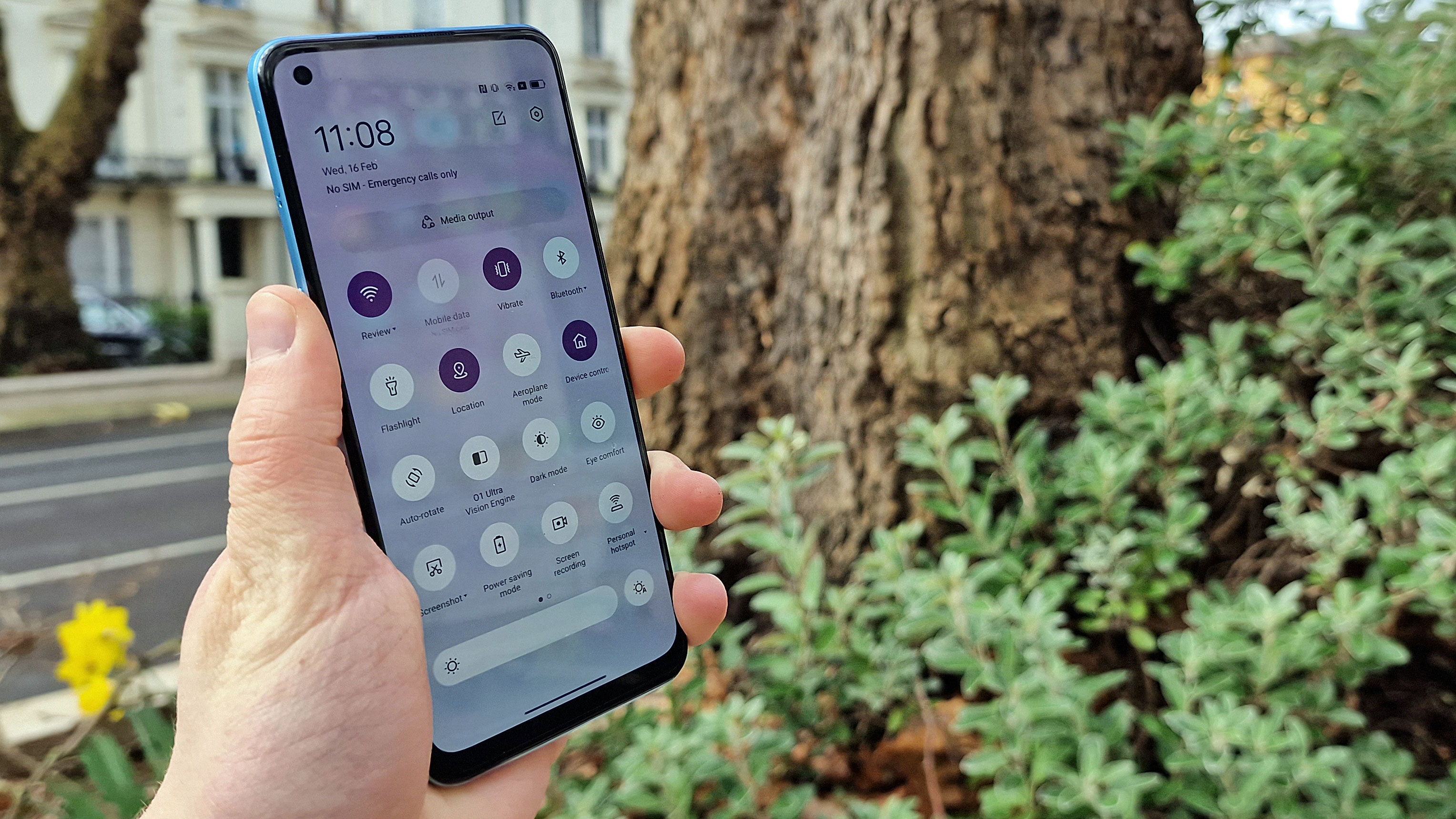
Battery life
Like the display, the battery life is another aspect of the Realme 9 Pro Plus that’s pretty average for this kind of phone.
There’s a 4,500mAh battery that reliably lasted for a day of use, whether the day consisted of the odd social media here and there or long bouts of mobile gaming and movie streaming. You can really push this phone and rely on it to keep ticking.
We wouldn’t go as far as saying the phone has a two-day battery though, as you’d need to really modulate your behavior to keep it going that long.
Charging speed is fairly impressive for a mid-range phone like this at 60W. Even some flagship phones, like the Samsung Galaxy S22, linger behind that.
At that speed, powering the phone from empty to full should take about half an hour - but given the phone’s battery life, you shouldn’t find yourself at 0% too often.
Should I buy the Realme 9 Pro Plus?
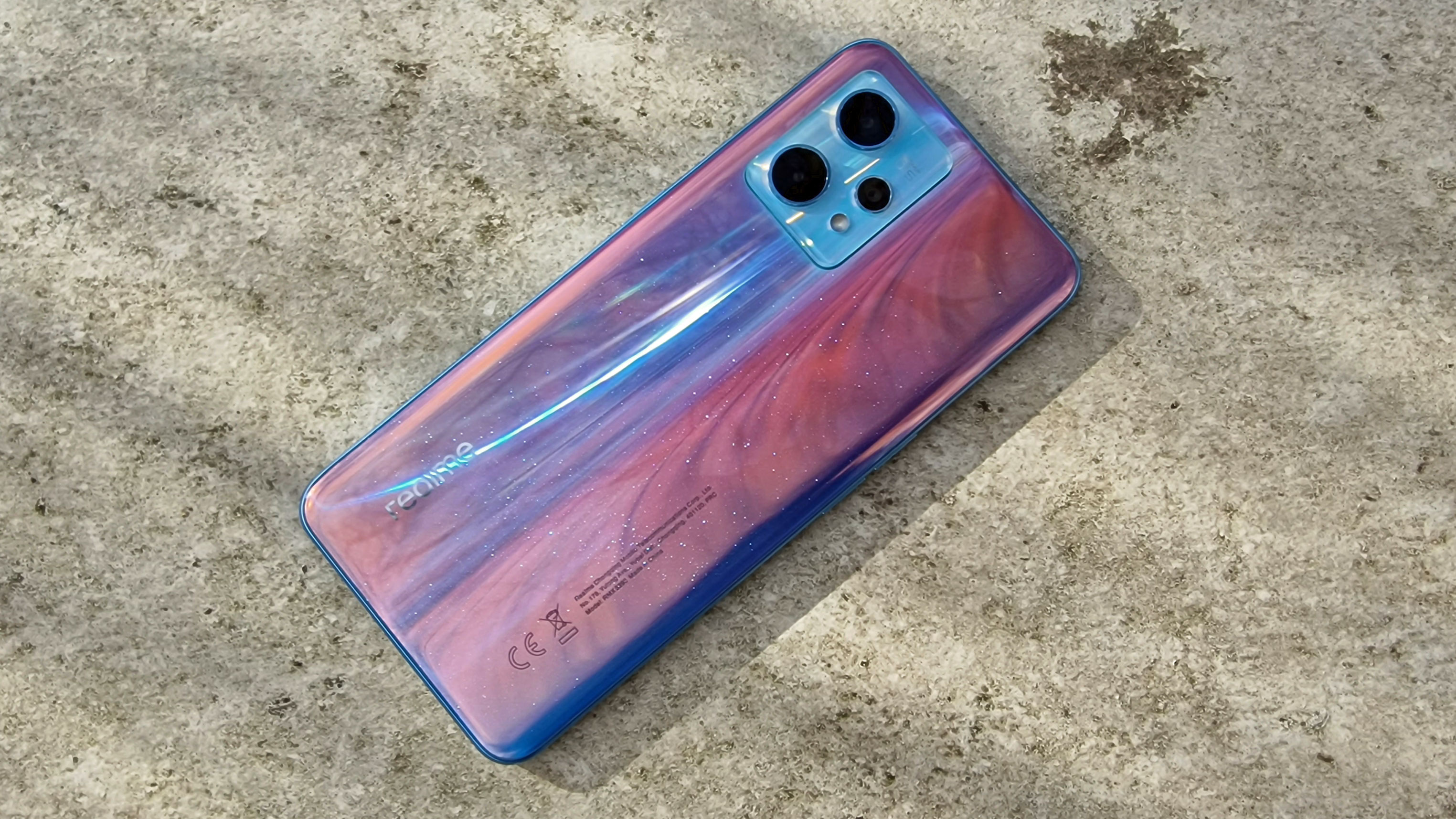
Buy it if...
The rear design impresses you
There’s no shame in finding the Realme 9 Pro Plus’ unusual rear design impressive; it’s a fun party trick (as long as your parties are outdoors on a sunny day), and it really makes the mobile stand out.
You like low-light photography
At the Realme 9 Pro Plus’ price, you’d be hard-pressed to find a better camera phone for taking pictures at night or in poor lighting conditions.
You need fast charging
Few mid-range mobiles hit 60W powering, and the few that do are also from Realme or its sister company OnePlus. Fans of fast powering will find this a great option.
Don't buy it if...
The heart rate sensor is your main draw
You might be pulled in by the fact the Realme phone has a heart-rate monitor, but if you really care about this feature, we’d recommend buying a cheap fitness tracker instead.
You need a two-day battery life
It makes sense to look to the mid-range or budget phone segments for a great battery, but while the Realme is decent in this regard, its lasting power isn’t particularly impressive.
You need a smooth screen refresh rate
One curious spec is that while the Pro Plus has a 90Hz screen, the more affordable Realme 9 Pro gets a 120Hz one. So if screen refresh rate is more important than a color-changing rear or low-light cameras, perhaps consider the other model.
- First reviewed February 2022

Tom Bedford joined TechRadar in early 2019 as a staff writer, and left the team as deputy phones editor in late 2022 to work for entertainment site (and TR sister-site) What To Watch. He continues to contribute on a freelance basis for several sections including phones, audio and fitness.
